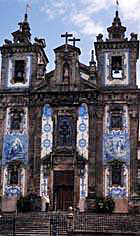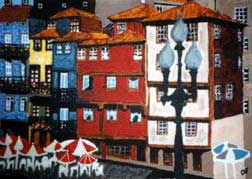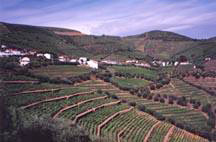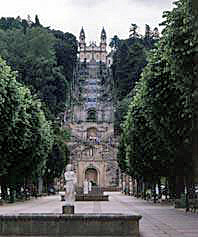

By
Don and Linda Freedman
Search
TheTravelzine
TheTravelzine Group
Access Your Mail
Don's
Gallery
Packing
Hints
Planning
Tips
Cities
Links
Links
LINKS TO OUR TRAVELOGUES
Argentina, Buenos Aires - Jan-Mar 2010
Argentina, Buenos Aires - Jan-Mar 2009
Argentina, Buenos Aires - Jan-Mar 2008
Austria - Fall 2005
Belgium, Brussels - Fall 2000
Canada - Summer 2002
Canada - Summer 2001
Canada - Summer 2000
Czech Republic - Spring 2000
France - Fall 2002
France, Paris - Fall 2000
France, Paris - Spring 1999
France, Lyon - Spring 1999
Germany, Berlin - Fall 2009
Germany - Fall 2002
Germany - Spring 2000
Germany - Fall 1999
Greece - Fall 2012
Greece - Fall 1999
Greece - Fall 1997
Hungary - Spring 2000
Israel - Fall 1999
Italy - Winter 2007
Italy - Winter 2006
Italy - Winter 2005
Italy - Winter 2004
Italy - Winter 2003
Italy - Winter 2001
Italy - Fall 1998
Italy - Fall 1996
Netherlands - Spring 2000
Portugal, Azores - 2019
Portugal, Azores - 2018
Portugal, Sao Miguel & Lisbon - 2017
Portugal, Azores - 2017
Portugal, Azores - 2016
Portugal, Azores - 2015
Portugal, Azores - 2014
Portugal, Azores - 2013
Portugal, Azores - 2012
Portugal, Azores - 2011
Portugal, Lisbon - 2011
Portugal - Fall 2006
Portugal - Fall 2004
Portugal - Fall 2003
Portugal - Fall 2001
Portugal - Spring 1999
Portugal - Spring 1997
Slovakia - Spring 2000
Slovenia - Spring 1999
Slovenia - Fall 1996
Spain, Barcelona - Winter 2006
Switzerland - Fall 2002
Switzerland - Spring 2000
Switzerland - Spring 1999
Switzerland - Fall 1998
Switzerland - Fall 1997
Switzerland - Spring 1996
U.S. Florida, Key West - Fall 2006
U.S. Florida - Spring 2001
U.S. Maine - Summer 2002
U.S. Massachusetts - Summer 2003
U.S. Massachusetts - Summer 2002
U.S. Massachusetts - Summer 2001
U.S. New York State - Fall 2005
U.S. New York State - Summer 2004
U.S. New York State - Summer 2003
U.S. New York State - Summer 2001
U.S. Washington,DC - Spring 2000
PORTUGAL Spring 1999 (1)
Porto
Douro, Lamego and Vila Real
After our first trip to this extraordinary country, we promised ourselves to return as soon as possible. This dream was brought to fruition a bit sooner than anticipated when we received an invitation to attend the wedding of our dear friends, Isabel and Paulo.
Our Air France flight from Paris to Porto, Portugal, was very comfortable with excellent food and service. Arriving in Porto at 20:30, we taxied to the Hotel Infante de Sagres, located in the heart of the city at Praca D. Filipa de Lencastre 62. This establishment is like a pair of old jeans that you can't wait to slip into. It's just not possible to feel more comfortable. The hotel manages to be both majestic and homey. The 18th century Italian inlaid table with ivory and mother-of-pearl that sits on a beautiful Tabriz rug in the wood-beamed main lobby reflects the grandeur. The happy face and the warm welcome from Francisco Torres at the front desk made us feel as though we'd never been away. His offer of a glass of Port wine, while we registered, really hit the spot.
Our accommodations were fabulous - a large bedroom with a king size bed and a comfortable sitting room with a desk and two completely equipped bathrooms. The furnishings were exquisite as they are throughout the hotel. The included sumptuous buffet breakfast is served in the splendid Dona Filipa dining room off the main lobby. Linda had been looking forward to the outstanding baked apples that were a regular buffet item last time. Nowhere to be found! We asked and in a few moments two still warm from the oven apples were before us. The day was off to a sweet start.
 We spent
the morning enjoying the pulse of this vibrant city, the
second largest in the country. The shopping streets Rua
de Santa Catarina, Rua de Sa da Bandeira and Rua de
Passos Manuel were alive with activity. We strolled
slowly, exchanging Bom Dias with everyone, as is
customary, checking out the shops, enjoyed the heavenly
scent of fresh breads and pastries and most important the
smell of chicken grilling from numerous barbecue places
we inspected as we walked. Once you've found the best,
forget the rest. We returned to Churrasqueira Moura, Rue
do Almada 219-223 with the intention of having the frango
(chicken) and fries. When we arrived at 12:30 the place
was full, except for one table at the rear. As we walked
through, the sight of the daily special of grilled
sardines made the frango a vague memory. These large,
fresh from the water, beauties were perfectly grilled
crisp outside with fresh, tender flesh. Potatoes are a
favorite staple in Portugal and have a very special
flavor and freshness no matter how they are prepared. The
herb boiled version, which accompanied the sardines, was
delicious as were the grilled yellow and red peppers. The
traditional mixed salad of lettuce, tomato and onion
dressed with the perfect blend of herb scented oil and
vinegar.
We spent
the morning enjoying the pulse of this vibrant city, the
second largest in the country. The shopping streets Rua
de Santa Catarina, Rua de Sa da Bandeira and Rua de
Passos Manuel were alive with activity. We strolled
slowly, exchanging Bom Dias with everyone, as is
customary, checking out the shops, enjoyed the heavenly
scent of fresh breads and pastries and most important the
smell of chicken grilling from numerous barbecue places
we inspected as we walked. Once you've found the best,
forget the rest. We returned to Churrasqueira Moura, Rue
do Almada 219-223 with the intention of having the frango
(chicken) and fries. When we arrived at 12:30 the place
was full, except for one table at the rear. As we walked
through, the sight of the daily special of grilled
sardines made the frango a vague memory. These large,
fresh from the water, beauties were perfectly grilled
crisp outside with fresh, tender flesh. Potatoes are a
favorite staple in Portugal and have a very special
flavor and freshness no matter how they are prepared. The
herb boiled version, which accompanied the sardines, was
delicious as were the grilled yellow and red peppers. The
traditional mixed salad of lettuce, tomato and onion
dressed with the perfect blend of herb scented oil and
vinegar.
Our destination after lunch was The House of Sandeman in Vila Nova de Gaia, home of the Port Wine industry, and a visit with our friend Ligia Marques, the Public Relations Manager for Sandeman.
The Gaia is south of the city across the Douro River by way of Ponte D. Luis, easily walkable from anywhere in the city center. We passed familiar sights and numerous buildings decorated with azulejos, the blue and white tiles painted with scenes of cultural, historical and religious significance, reminding us of the proud character of this city and of Portugal.
 The road to Gaia leads through the Ribeira,
the town's oldest quarter. Clinging to the steep hillside
along the river, it's a maze of skinny, stone streets,
stairs and colorful homes. Many of the best restaurants
are located here. When we were here in 1997, much to
Ligia's dismay, we did not have time to devote to the
Douro region. Not wanting to repeat our mistake, we had
planned for a three day visit to the Douro on our way to
Coimbra for the wedding. Today Ligia would review our
itinerary and offer her advice. She concluded that we
hadn't allowed enough time for the Douro and that she
would pick us up in Coimbra the morning after the wedding
and take us on a two-day tour to perfect our experience.
The road to Gaia leads through the Ribeira,
the town's oldest quarter. Clinging to the steep hillside
along the river, it's a maze of skinny, stone streets,
stairs and colorful homes. Many of the best restaurants
are located here. When we were here in 1997, much to
Ligia's dismay, we did not have time to devote to the
Douro region. Not wanting to repeat our mistake, we had
planned for a three day visit to the Douro on our way to
Coimbra for the wedding. Today Ligia would review our
itinerary and offer her advice. She concluded that we
hadn't allowed enough time for the Douro and that she
would pick us up in Coimbra the morning after the wedding
and take us on a two-day tour to perfect our experience.
Francisco had recommended Chez Lapin, Praca da Ribeira, and had made reservations for us. Located in one of the alcoves just behind the waterfront, this family-run restaurant serves rapturous renditions of typical regional cuisine. There is outdoor seating in the alcove which, like the ground floor, was completely filled when we arrived. We were shown to our table in one of the two upstairs dining rooms. As we walked through the eclectic stone, tile, stucco and timber interior, we witnessed the diners obviously enjoying their glorious looking and smelling offerings and we already knew we had lucked out big time. Francisco had hit the nail on the head with this place!
Our waiter patiently reviewed the menu with us, explaining the preparation of each item of interest to us. Our shrimp appetizer consisted of a dozen large, succulent shrimps in their shells, served in the pot in which they were cooked in herb and garlic infused olive oil. Fish and meats cooked in clay or metal pots in the oven with vegetables are traditional specialties. At Chez Lapin, the delicate swordfish was baked with olive oil, herbs, garlic, potatoes and small, sweet onions and the tender, meaty rabbit was done just as deftly with the addition of white wine. Almeida, the happy and gregarious owner, stopped by to introduce himself and to check that we were enjoying our dinner. He moved from table to table, checking that his guests were satisfied - adding his special personal touch to the gastronomic experience.
 The Douro River runs from Porto to
the Spanish border. The valley of the Douro, her rock
crusted, mountainous borders transformed into walled,
fertile terraces, is a gigantic vineyard. The Douro name
is synonymous with wine. Rolling up, down and through the
mountains in late spring, one is awestruck by the
patchwork hues of green. Mind boggling to us was is labor
that went into carving these terraces out of the rock,
hauling the soil, planting, fertilizing and the
difficulty of the ongoing maintenance and harvesting on
these steep slopes. The grapes are cut from the vines by
hand and hauled up and down the slopes in baskets
strapped on backs. I strapped an empty basket onto my
back and, absent the grapes, it was pretty darn heavy.
These are hard working, sturdy people.
The Douro River runs from Porto to
the Spanish border. The valley of the Douro, her rock
crusted, mountainous borders transformed into walled,
fertile terraces, is a gigantic vineyard. The Douro name
is synonymous with wine. Rolling up, down and through the
mountains in late spring, one is awestruck by the
patchwork hues of green. Mind boggling to us was is labor
that went into carving these terraces out of the rock,
hauling the soil, planting, fertilizing and the
difficulty of the ongoing maintenance and harvesting on
these steep slopes. The grapes are cut from the vines by
hand and hauled up and down the slopes in baskets
strapped on backs. I strapped an empty basket onto my
back and, absent the grapes, it was pretty darn heavy.
These are hard working, sturdy people.
Long ago, it was discovered that the combination of soil and climactic conditions in this valley were ideal for the cultivation of the grapes used to produce the Port wine. In the 18th century, the Marquis of Pombal rewarded their hard work with the title of Demarcated Region, the world's first. Today it is more than just Port; wonderful reds and whites are produced here and since our visit in 1997, we have been buying them here in Toronto and have seen their popularity increase. On this trip we would also discover the excellent sparkling wines and Favaios Muscatel. The conditions ideal for grape growing are also perfect for olives, almonds, cherries, figs, peaches, oranges and apples and these can be seen dotting the slopes along with vividly colored wild flowers.
The ideal way to tour the Douro is slow and easy, by car. There are Douro River cruises of varying lengths from Porto but we opted for the train and bus alternative for the three days we had planned. We had decided to headquarter out of Lamego, located in the heart of the south Douro.
We left Porto just before
11:00 and about three hours later we arrived in Peso da
Regua, the hub of transportation for the area. The bus to
Lamego was waiting for us and 30 minutes later we were at
the Albergaria do Cerrado, located just beyond the city
center, across from the bus station - really perfect for
our needs. This is a spotlessly clean, family-run place
where the owners live in an apartment at ground level
with the guest rooms above. A small lounge is off to the
left of the registration desk and a larger bar/lounge on
the right is where we were invited in for coffee and
delicious homemade cake. It was just lucky timing. They
were expecting guests who soon began arriving and that
was their way of not making us feel left out.![]()
Our room, like a basic size motel room, was nicely
furnished and quite adequate, with a good size balcony.
The included breakfast buffet consisted of standard
offerings. The breakfast room is filled with lovely
antiques that create a pleasant atmosphere. The most
outstanding feature of this place is the attention to
cleanliness; it seemed as though someone was always about
wiping, scrubbing, washing or polishing. The owners are
sweet people and most accommodating. It's an excellent
three star value.
 Lamego is the cultural capital of
the Douro. The tree-lined wide esplanade through the
center of town, a hub of social activity, leads to the
monumental staircase at the top of which, perched over
the city, is the Igreja e Escadorio de Nossa Sr. dos
Remedios. The wooded area surrounding the terraced
stairways is a playground of outdoor activities including
sports and picnicking. When we finally reached the summit,
we felt pretty good about the calories we had burned off.
Lamego is the cultural capital of
the Douro. The tree-lined wide esplanade through the
center of town, a hub of social activity, leads to the
monumental staircase at the top of which, perched over
the city, is the Igreja e Escadorio de Nossa Sr. dos
Remedios. The wooded area surrounding the terraced
stairways is a playground of outdoor activities including
sports and picnicking. When we finally reached the summit,
we felt pretty good about the calories we had burned off.
The Museum of Lamego is housed in the ancient Bishop's Palace, rebuilt between 1750-1786. The original collections of furniture, paintings, tapestries, sculpture and some priestly garments and jewelry are from the original Bishop's Palace. Other churches and convents in the country along with private citizens and local governments have contributed to the present collection. Truly outstanding are the panels from the cathedral of Lamego, the Vasco Fernandes painting and the 16th century Flemish tapestries. The creativity, time, patience and skill that went into creating these tapestries is extraordinary. The cloister and adjoining chapels are particularly impressive.
Other notable evidence of the cultural significance of the city is the Nicolau Nasoni paintings on the cathedral dome and the baroque fountains and statues to be found all around.
The narrow streets off the
main esplanade led us up into the old town. It wasn't
easy passing the tiny, neighborhood food shops, cafes and
restaurants and not stopping for a few samples. It was
still early and we had ground to cover. Working our way
up, we were impressed by the way the old homes had been
maintained. The streets were spotless and many of the
doorways and steps were being scrubbed as we passed.
Unfortunately, the fortress at the top was closed but we
could appreciate the views of the surroundings. In
contrast to this old town and the history we had just
left below, we could see new high rise apartment
buildings springing up above the area where our hotel was
located.![]()
On our way down, we passed a tiny, tiny church from which
four ladies were emerging. They eagerly told us that this
was the original church of the town and the one lady who
spoke English gave us a history lesson and was thrilled
at this opportunity to practice the language.
When we were near the cathedral, we had seen an interesting looking restaurant in its shadow, appropriately named Tras da Se (across from the cathedral), on Rua Virgilio Correia 12. Linda had to drive me out of the fabulous pastry shop next door. The ambiance is pure kitchen. The family Freitas - Abilio, Fatima and adorable 13 year old son, Jorge, who waited on us, made us feel right at home. We shared half orders of roasted cabrito (goat) and leito (pig), which were perfect. The excellent hand cut fries, white rice and mixed salad rounded out the meal along with the garlicky black olives and corn bread and the refreshing, chilled vinho verde.
While we were waiting for a bus to take us from Lamego to Regua on our way to Vila Real a tour bus pulled into the station and discharged its male occupants who immediately began unpacking the contents of the large baskets they were carrying. Right in the middle of the open-air bus depot, they proceeded to enjoy an animated picnic with tons of food and wine. The aroma of meats, sausages, ham and cheese filled the air - torture! A Portuguese couple we had met suggested that these were probably some company employees enjoying a "boys only" short holiday.
The countryside between Lamego and Regua is pure Douro - hills and valleys tiered with vineyards. It was cherry season and the roadsides were filled with stands piled high with the fresh crop.
The bus we thought was scheduled from Regua to Vila Real did not appear and we discovered that was because it was Sunday and it wouldn't be going until much later in the day. We found a taxi driver who lived in Vila Real and was going home for the day and willing to give us a very good rate.
Winding through the hills and mountains from one incredible vista to another took our mind off the speed at which we were flying around the hairpin turns. We asked the driver to suggest a churrasqueria for lunch and he dropped us off at Ze DOS Frangos, L. Pioledo 20. It was the Sunday family hour. The place was jumping and the frango was flying off the grills. Half a chicken along with grilled sardines, boiled potato and broccoli landed on our table. A perfect lunch in a perfect neighborhood environment.
Vila Real is famous for its grand manor houses. The best known and open to the public is the Mateus Palace. This is an 18th century baroque masterpiece. The residence is surrounded by impressive gardens and as we walked through, we appreciated the design and care of the sculpted plantings. Further beyond the gardens are the vineyards from which the Mateus rose' wine is produced.
We enjoyed gawking at the fine mansions and exploring the old pedestrian shopping streets that were today filled with locals enjoying the brilliant and warm weather.
The best part of this
visit started at the train station where we boarded the
single red coach that runs on a narrow gauge line back to
Regua. While the taxi ride up was special this train ride
back, twisting and turning on the sides of the mountains
from high up to way down low, was incredible. We were
continuously surrounded by green mountains, vineyards,
olive groves with sightings of sparkling waterways deep
in the valleys. It is a must to take this train at least
on way - preferable from Vila Real to Lamego - as the
climb is reputed to be laborious in the other direction.![]()
![]() to Lamego
to Lamego
Search TheTravelzine | TheTravelzine Group | Don's Gallery
Packing Hints | Planning
Tips | Cities
Links
All pages on TheTravelzine.comęCopyright 1996-2020 Don & Linda Freedman